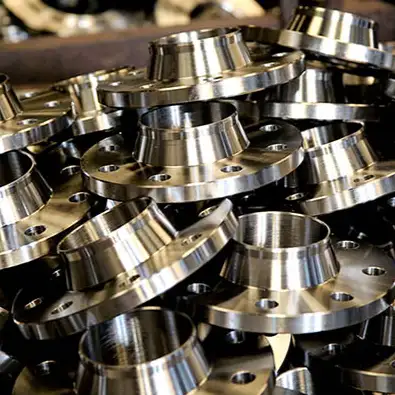SUS304—also known as 18/8 or 18/10 stainless steel (UNS S30400)—is the most widely used austenitic stainless alloy worldwide. With 18–20% chromium and 8–10.5% nickel, plus small amounts of carbon, manganese, silicon, and nitrogen, it delivers excellent corrosion resistance, formability, and weldability across a vast temperature range. From food processing equipment and architectural facades to chemical tanks and automotive trim, SUS304’s versatility makes it a default choice in applications demanding both durability and hygiene.
1. Introduction to SUS304
Developed in 1924 and standardized as JIS G4303’s SUS304, this grade is functionally equivalent to AISI 304 (UNS S30400) and EN 1.4301. Its face-centered cubic (austenitic) microstructure remains non-magnetic and ductile even at cryogenic temperatures. The “18/8” nickname stems from its nominal composition: 18% chromium for passivation and 8% nickel for toughness.
2. Chemical Composition
| Element | Range (%) |
|---|---|
| Carbon (C) | ≤ 0.08 |
| Chromium (Cr) | 18.00 – 20.00 |
| Nickel (Ni) | 8.00 – 10.50 |
| Manganese (Mn) | ≤ 2.00 |
| Silicon (Si) | ≤ 1.00 |
| Phosphorus (P) | ≤ 0.045 |
| Sulfur (S) | ≤ 0.015 |
| Nitrogen (N) | ≤ 0.10 |
| Iron (Fe) | Balance |
Sources: JIS G4303 (SUS304); Thyssenkrupp Data.
3. Mechanical Properties
| Property | Value |
|---|---|
| Tensile Strength | 520 – 720 MPa |
| Yield Strength (0.2% PS) | ≥ 205 MPa |
| Elongation at Break | ≥ 40% |
| Hardness (Brinell) | 150 – 210 HB |
| Modulus of Elasticity | ~193 GPa |
| Density | 7.93 g/cm³ |
Compiled from Thyssenkrupp and MatWeb.

4. Corrosion Resistance
SUS304’s chromium-rich passive film withstands most atmospheric and mild chemical environments. It resists oxidation up to 870 °C and offers pitting resistance in chloride concentrations up to 150 mg/L at 60 °C. However, in warm chloride media or sulfur-rich acid soils, stress corrosion cracking and crevice corrosion can occur, prompting upgrade to 316 or duplex grades for severe conditions.
5. Fabrication & Processing
| Process | Recommendations |
|---|---|
| Forming | Excellent formability; work-hardens with cold work |
| Welding | Very good weldability; no post-weld anneal required |
| Machining | Moderate machinability; use carbide tooling and coolant |
| Heat Treatment | Annealing 1010–1120 °C, rapid quench to retain austenite |
| Surface Finish | Electropolishing enhances corrosion resistance |
Guidelines from ASM Materials and AZoM.
6. Typical Applications
- Food & Beverage: Tanks, conveyors, utensils, processing lines
- Architectural: Cladding, handrails, decorative elements
- Chemical Processing: Reactors, piping, storage vessels
- Automotive: Trim, exhaust mufflers, heat shields
- Home Appliances: Sinks, cookware, refrigerator panels
- Medical: Surgical instruments, visible implants
7. Global Standards & Equivalents
| Standard System | Designation |
|---|---|
| JIS | SUS304 |
| AISI/SAE | 304 (S30400) |
| ISO | X5CrNi18-9 |
| EN | 1.4301 |
| GB/T (China) | 06Cr19Ni10 |
| GOST (Russia) | 08Kh18N10 |
Understanding these cross-references ensures correct material selection and compliance with regional specifications.
8. Selection Criteria & Decision Guide
- Environment: Up to 150 mg/L chlorides at 60 °C → SUS304; beyond → 316/2205.
- Temperature: Continuous service up to 870 °C; intercritical sensitization between 425–860 °C → avoid unless solution-annealed.
- Strength: Cold work 20–30% increases yield to ~350 MPa, tensile to ~800 MPa.
- Appearance: Electropolished 304 for fingerprint resistance; brushed finish for aesthetics.
- Cost: SUS304 is cost-effective; upgrade to Ni-rich grades only as needed.
9. Market Pricing & Trends
- Price Range: $2,500–$4,000 per metric ton for coil/sheet in 2025, depending on nickel market.
- Drivers: Nickel and chromium commodity swings, stainless recycling rates, green hydrogen production demands.
- Outlook: Increased demand in renewable energy and medical devices supports stable pricing.
10. Sustainability & Recycling
- Recycled Content: Often ≥60% recycled scrap.
- Recyclability: SUS304 is endlessly recyclable without quality loss.
- Environmental Impact: Using recycled stainless reduces CO₂ footprint by up to 60% compared to primary smelting.
11. Emerging Technologies & Future Directions
- Nano-structured Coatings: Enhancing pitting resistance for marine use.
- Additive Manufacturing: 304L powders for complex geometries; research into 304 suitability for laser powder bed fusion.
- Digital Twins: Predictive maintenance models for 304 equipment lifecycles.
12. FAQs
- What’s the difference between 304 and 304L?
304L limits C to ≤0.035% to prevent carbide precipitation during welding, improving intergranular corrosion resistance. - Can SUS304 be used in marine environments?
Yes, in mild seawater exposure; for continuous immersion or splash zones, consider 316 or duplex grades. - Is SUS304 magnetic?
Fully annealed 304 is non-magnetic; cold working can induce slight magnetism.
Conclusion
SUS304 stainless steel’s combination of corrosion resistance, ductility, formability, and cost-effectiveness makes it the go-to alloy for countless applications. By adhering to the guidelines for selection, fabrication, and maintenance outlined here, engineers can ensure optimal performance and longevity in everything from kitchen appliances to chemical processing plants.











